Animalia

Hawaiian Bobtail Squid
Euprymna scolopes

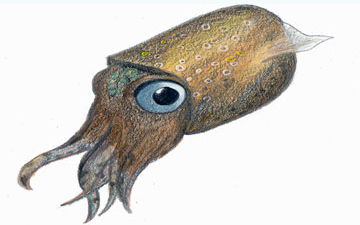
Sorry, there is no photo available. If you have one, please submit
here
.
11 POINTS
• Euprymna scolopes has a MOVE of 2.
• Euprymna scolopes and Vibrio fischeri (a bioluminescent bacteria) are MUTUALISTIC.
Warm
Graphic by Gina Allnattginasketch.carbonmade.com
The Hawaiian Bobtail Squid (Euprymna scolopes) is a species of bobtail squid native to the central Pacific Ocean, where it occurs in shallow coastal waters off the Hawaiian Islands and Midway Island.[1][2] The type specimen was collected off the Hawaiian Islands and is deposited at the National Museum of Natural History in Washington, D.C..[3] E. […] read more

Madagascar Giant Day Gecko
Phelsuma madagascariensis grandis


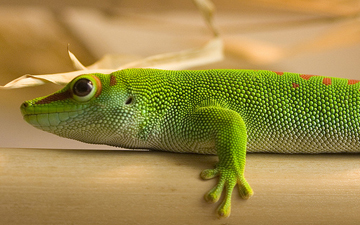
6 POINTS
• Phelsuma madagascariensis grandis has a MOVE of 2.
“Giant day geckos have no eyelids. To keep their eyes clean, they often lick them.”
Warm, Hot
Graphic by Liesbeth Lenaersfruitybirdstudio.daportfolio.com
Photo by Brian Gratwickewww.briangratwicke.com/
Phelsuma madagascariensis grandis Gray, 1870, is a diurnal arboreal subspecies of the day geckos (Phelsuma spp.). These geckos are apart of the Phelsuma group, which consists of 70 species and subspecies. One common name is Madagascar giant day gecko, being large and is found in areas of tropical and subtropical forest in northern Madagascar. As […] read more

Brown Throated Sloth
Bradypus variegatus

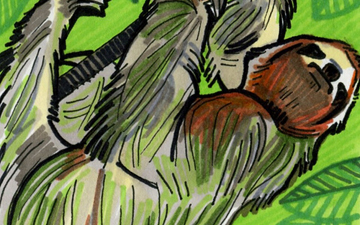
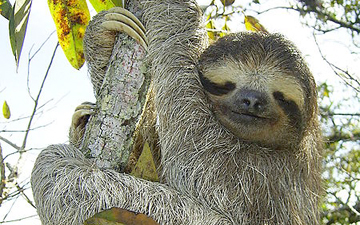
7 POINTS
• Bradypus variegatus has a MOVE of 1.
“Sloths are the slowest land mammals. Their top speed on the ground is 5 ft/min. Up in the trees, they speed up to 15 ft/min.”
Warm, Hot
Graphic by Heather Ravenscroftheatherravenscroft.wordpress.com
Photo by Stefan Laubeen.wikipedia.org/wiki/File:Bradypus.jpg
The Brown-throated Sloth (Bradypus variegatus) is a species of three-toed sloth from Honduras to Colombia, Ecuador, Brazil, W Venezuela, E Perú and Bolivia, Paraguay, and N Argentina. It is a mammal classified within the Bradypodidae family. It is one of only four species of three-toed sloths; the other three being the Pygmy Sloth, the Pale-throated […] read more

Ringtail
Bassariscus astutus

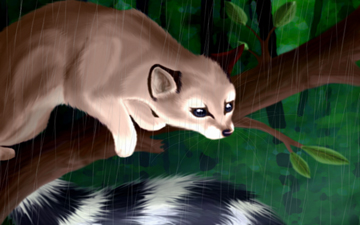
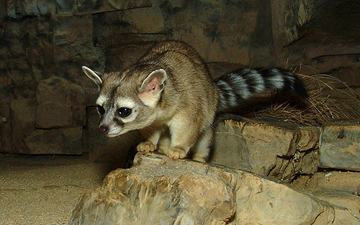
4 POINTS • Bassariscus astutus has a MOVE of 2.
Warm, Hot
Graphic by Tesseri-Shirawww.tesseri-shira.deviantart.com
Photo by Joachim S. Müllerholy-island-lindisfarne.blogspot.com/
The ringtail (Bassariscus astutus) is a mammal of the raccoon family (thus not actually a cat), native to arid regions of North America. It is also known as the ringtail cat, ring-tailed cat or miner’s cat, and is also sometimes mistakenly called a “civet cat” (similar, though unrelated, cat-like omnivores of Asia and Africa). The […] read more

Winter Wren
Troglodytes troglodytes


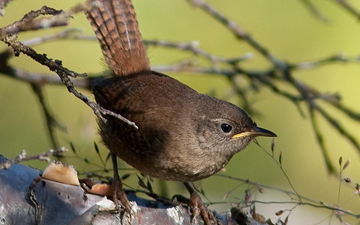
4 POINTS
• Troglodytes troglodytes has a FLIGHT of 2.
Cold, Cool, Warm
Graphic by Gaynor Foxphylogame.org
Photo by Ómar Runólfssonwww.fluidr.com/photos/omarrun/interesting
The Winter Wren (Troglodytes troglodytes), also known as the Northern Wren, is a very small bird, a member of the mainly New World wren family Troglodytidae. It is the only one of nearly sixty species in the family that occurs in the Old World; in Anglophone Europe it is commonly known simply as the Wren, […] read more

European Honey Bee
Apis mellifera

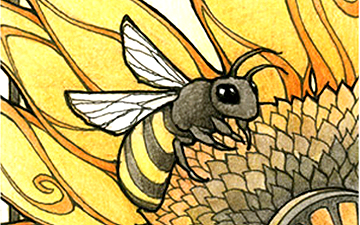
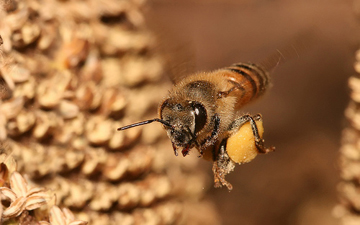
5 POINTS
• Apis mellifera has a FLIGHT of 2
• Apis mellifera is considered a POLLINATOR.
This image depicts a worker.
Cool, Warm
Graphic by Kiriko Mothkiriko-moth.com
Photo by Muhammad Mahdi Karimwww.micro2macro.net/home.html
The European honey bee or western honey bee (Apis mellifera) is a species of honey bee. The genus Apis is Latin for “bee”, and mellifera comes from Greek melli- “honey” and ferre “to bear” — hence the scientific name means “honey-bearing bee”. The name was coined in 1758 by Carolus Linnaeus who, realizing that the […] read more